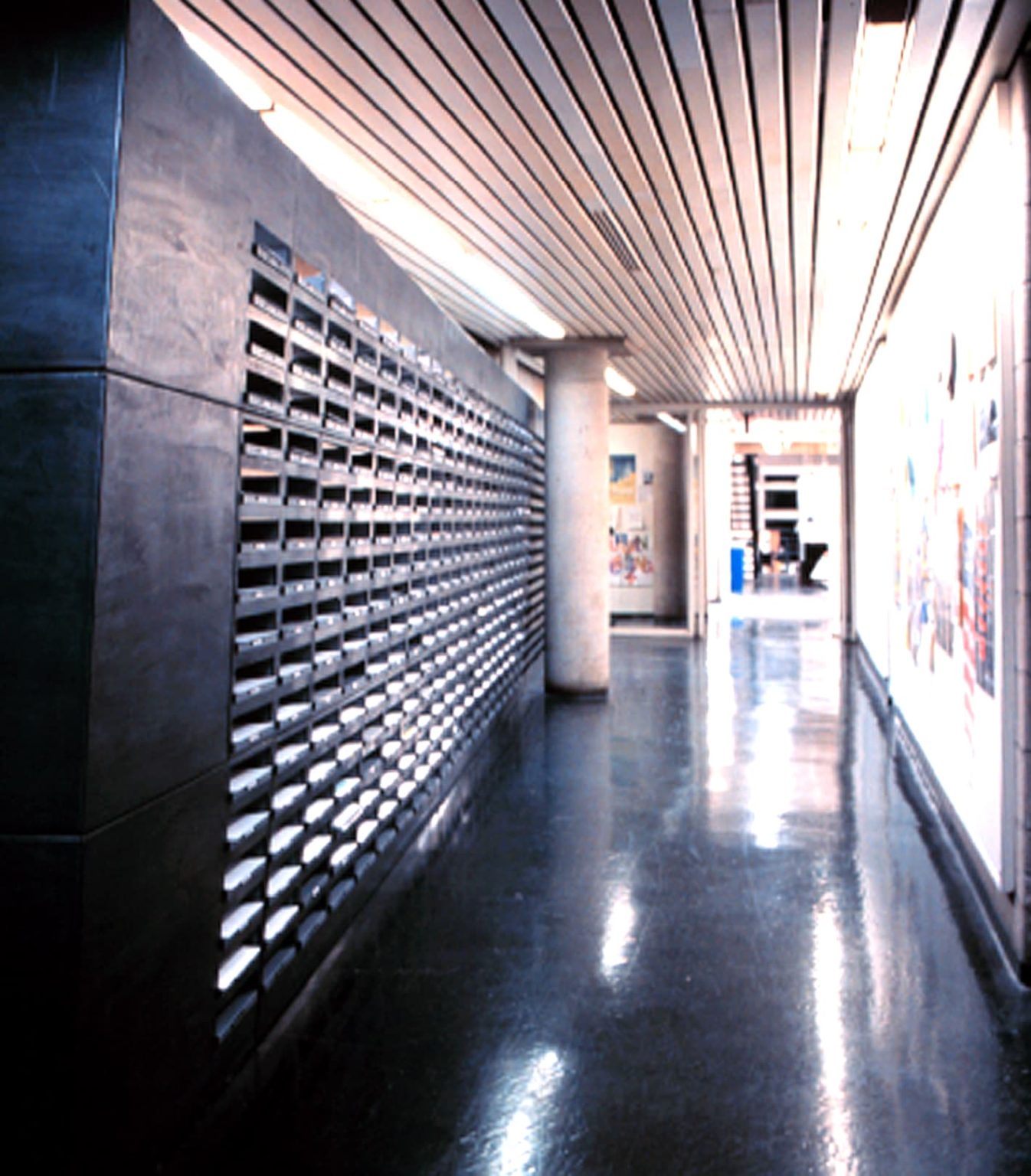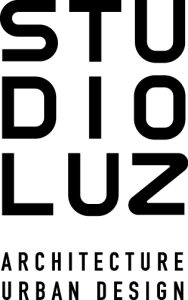Harvard
Mailboxes
HARVARD GRADUATE SCHOOL OF DESIGN, CAMBRIDGE, MA
Competition Winner, design and construction of a Mail-Slot System, 400 sf
Completion: 1999
Project Overview
This project explores new territories and possibilities in the typology of the mailbox system while satisfying the traditional needs of physical mail collection center. The project was the first-place winner of a design-build competition at The Harvard Design School.
Project Team
Hansy Better Barraza
Anthony J. Piermarini
Michael Cosmas
LED Technology
Michael Schroeder
Photography
Anita Kan
Exploring New Possibilities
COLLECTIVITY & INNOVATION
The system explores new possibilities of the mailbox system while serving traditional ones. By presenting itself as a physical matrix of the student body, the conventional mailbox system unfolds a unique and exciting moment: a moment of collectivity.
MODERN AESTHETIC
STEEL WALL WITH LASER CUT PANELS
Steel panels were laser cut from digital templates, folded and welded at the corners, and sequentially bolted together to construct a continuous three-dimensional face.
PHYSICAL MEETS DIGITAL
MATRIX OF LEDS
In addition to the physical mail slots, the system deploys a digital expression: a matrix of LEDs corresponding with each mail slot and linked to a computer.









About the Mail-Slot System
AT THE HARVARD GRADUATE SCHOOL OF DESIGN
Designed and completed just before the new millennium, this mail-slot system was a response to the prevailing internet age, the traditional process of physical mail distribution, and the relational nature of receiving and transmitting information. By presenting itself as a physical matrix of the student body, the conventional mailbox system unfolds a unique and exciting moment: a moment of collectivity. This system deploys both a physical expression (a steel wall with approximately 320 mail slots) and a digital expression (a matrix of LEDs corresponding with each mail slot and linked to a computer). The computer interface allows a user to identify and select a subset of mailboxes (a class, an interest group, a sports team) from a touch-screen database and, once selected, the LEDs illuminate the corresponding mail slots. The wall works as an integrated surface in which the vertical and horizontal flanges provide structural integrity. Panels were laser cut from digital templates, folded and welded at the corners, and sequentially bolted together to construct a continuous three-dimensional face. The steel wall is activated by a series of mail slots, creating a matrix of “receptors.”
In addition to purely pragmatic scenarios, the system can accommodate other more sophisticated uses, such as the notification of receipt of e-mail or voicemail. The applications of this expanded system as a locational and relational device are limitless. The LED matrix can host anything from digital “shows” to virtual voting sessions. The array of lights continuously maps and re-maps organizational systems. Previously unseen relationships gain visibility through this juxtaposition; new relationships and transmissions are solicited by it.


